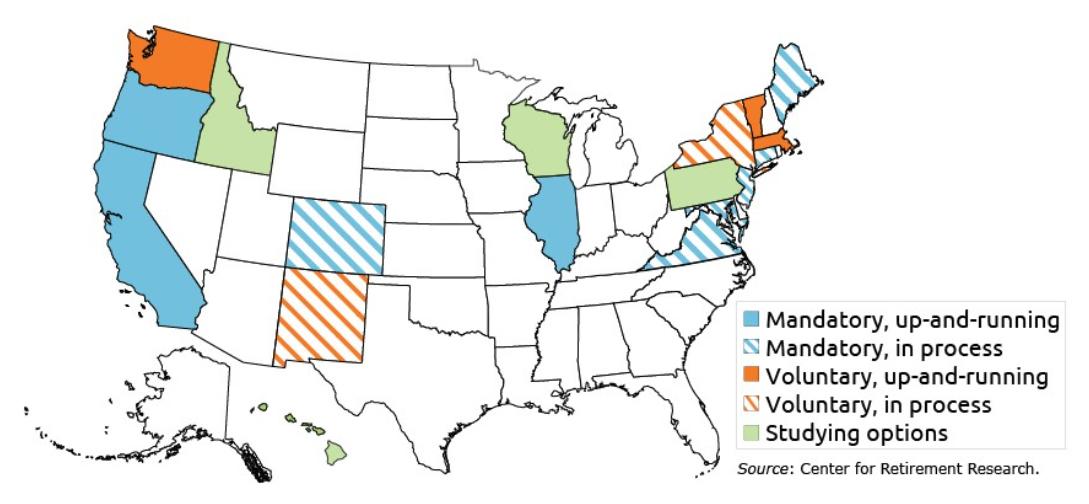
U.S. Chamber’s ‘Unique’ Court Strategy Targets 401(k) Fee Cases
The U.S. Chamber of Commerce has ramped up its legal campaign punching back against the expansion of proposed class actions challenging 401(k) plan fees.
The organization filed amicus briefs in a trio of cases in late February and early March urging federal district courts to dismiss claims against companies brought under the Employee Retirement Income Security Act. That followed a similar burst of briefs filed in three ERISA cases at the motion-to-dismiss stage last fall.
“This is unique,” said Ruben Garcia, a labor and employment law professor at the University of Nevada-Las Vegas who’s written about amicus brief strategy. “It’s rare that amicus briefs are filed in district court. This particular pattern is even more rare.”
The Chamber’s strategy reflects private sector concern with the surge in 401(k) fee class actions. The number of such suits filed jumped nearly five-fold from 2019 to 2020. The group said in briefs that “the year-and-a-half since then have only seen more of the same.”
The spike in litigation is partly due to plaintiffs’ attorneys cherry-picking data and disregarding realities of plan management to create a picture of mismanagement, the Chamber argues. Courts often lack the context to toss the cases at the motion-to-dismiss stage, which puts pressure on employers to settle cases, the group said.
But lawyers who’ve brought ERISA lawsuits say that defined contribution plans are vulnerable to disloyal and imprudent management because employers have little incentive to keep costs low and can gain from self-dealing arrangements with plan service providers. Employers face lawsuits if they fail to ensure that well-performing, low-cost investment options are available to plan participants, they said.
The Chamber filed briefs urging courts to dismiss 401(k) fee lawsuits against Xerox Corp., the Kroger Co., Voya Financial Inc., Humana Inc., Exelon Corp., and the American National Red Cross.
Lawyers for the plan participants suing Kroger criticized the Chamber’s strategy in a filing asking the court to reject its amicus brief. They argued the Chamber sought to “prematurely interfere” in a way that’s typically reserved for appellate cases that involve legal issues with broad impacts.
“Allowing the Chamber to overreach and file its amicus brief would therefore create a slippery slope that could open the door for the Chamber to file similar briefs at the pleading stage in virtually every ERISA class action in this District and others involving retirement plans with high fees or underperforming investments,” the attorneys said.
Sending Signals
While amicus briefs primarily serve as a vehicle for people or groups outside of a case to make legal and policy arguments, they also signal to the court—and an organization’s donor base—that the case is important, academics said.
That messaging is especially important when the U.S. Supreme Court is considering taking a case, because amicus briefs boost the odds that the justices will grant a petition for review, said Paul Collins, a professor of legal studies and political science at the University of Massachusetts-Amherst.

Outside briefs are filed in every case that the Supreme Court hears and in about 10-15% of cases in federal appeals courts, Collins said. But they’re so rare in district court cases that researchers don’t have a firm sense of how frequently they’re filed, said Collins, who’s written extensively about the use of amicus briefs.
By getting involved in district court cases, the Chamber is trying to shape that case’s record—which can be particularly important on appeal, because some judges won’t consider anything that’s not in the record, he said.
“This seems to be a concerted lobbying effort,” Collins said.
Bringing Attention
The Chamber decided to target ERISA cases at the motion-to-dismiss stage to bring attention to the impact that the surge of litigation has had on retirement plans, making them more expensive to administer, said Chantel Sheaks, the Chamber’s vice president for retirement policy.
Sheaks declined to comment on how the Chamber chose which cases to file briefs in.
The group wants to shed light on what goes into running a retirement plan, so judges can examine the claims in the ERISA lawsuits in the context of how plan administration really works, Sheaks said.
The emphasis on context similarly animates a legal argument in the most recent trio of amicus briefs, which quote from the last sentence in the Supreme Court’s ruling January in Hughes v. Northwestern University. The high court said that ERISA fiduciaries deal with “difficult tradeoffs” and courts must give due regard to the “range of reasonable judgments” they make.
“Some people would say the Hughes decision is a win for the plaintiffs’ bar, but we actually didn’t see it that way,” Sheaks said. “It directs courts to really look at these claims in a context-specific way. We think how Hughes is developed at the district court level is going to be important.”
Context Determines Prudence
In Hughes, the high court unanimously revived an ERISA lawsuit against the university, saying the appeals court had wrongly applied a categorical rule to throw out the case. The court reaffirmed its rule from Tibble v. Edison International instructing courts to conduct a context-specific inquiry of a fiduciary’s continuing duty to monitor investments and to remove those that aren’t prudent.
“Defendants have tried to say their fees are per se prudent,” said Jennifer Lee, an attorney with Nichols Kaster PLLP. “If anything, Hughes makes it harder for defendants to argue in their motions to dismiss that their fees are per se prudent.”
Lee, who represents retirement plan participants who sued Xerox in the case in which the Chamber filed an amicus, said that excessive 401(k) fee litigation has been good for workers by driving down what they pay to the plans and boosting their performance.
Since litigation over plan fees began in earnest in 2006, defined contribution plans have improved their performance by about 1.3% annually, which translates to an increase of more than $100 billion per year, according to an ERISA investment advisor’s brief filed in the Hughes case.
No Stopping
District courts have accepted the Chamber’s amicus briefs in three of the cases and rejected them in one, with the issue pending in the other two cases.
The Chamber obviously prefers when courts accept their briefs, but there’s value in signaling the importance of protecting retirement plans even when courts turn them aside, Sheaks said.
Given there’s more than 700,000 401(k) plans in the U.S. and no end in sight to ERISA lawsuits challenging fees, the Chamber plans on continuing its amicus brief campaign, she said.
“I wish the answer was that we could stop tomorrow,” Sheaks said. “But I don’t see these new complaints stopping.”
}})